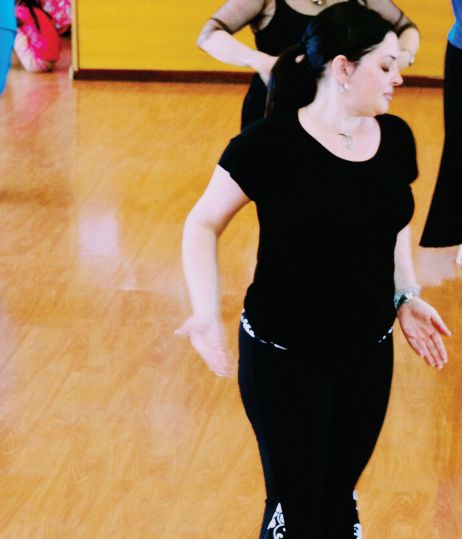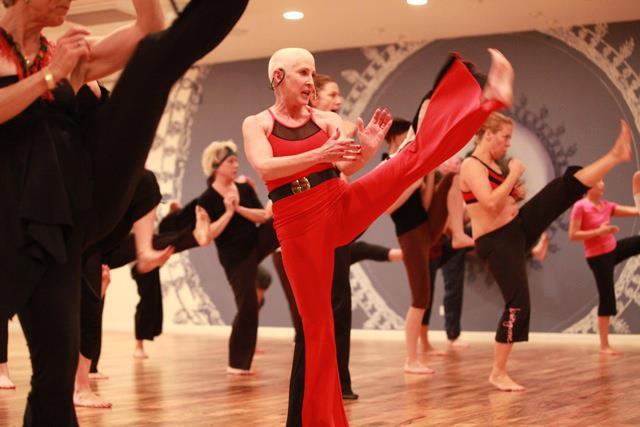Susan Sloan
Nia White Belt Somatic Trainer and Black Belt Instructor
South Africa
These last few weeks I have felt carried by my 16 years of movement art practice called Nia. I’ve realised even more how the pillars of health and wellness lie in being mindful and staying present. And also cultivating sensations of fitness in the body: Flexibility, Agility, Mobility, Stability, and Strength.
With all that is happening in the world right now, as we and many countries go into lockdown to contain this COVID-19 pandemic, I feel I have tools to stay balanced through Nia’s philosophy of The Body’s Way. A way of living with the body as a nested system in accordance with the body’s design. For me, over these years, my Nia practice fits in with my belief systems of “Through Movement we Find Health”, and learning to listen to the body to practice preventative medicine and optimal health. As I learn each day more and more to listen to my body’s voices and interpret its signals, I make small adjustments to feel better. These adjustments can be so simple, for example changing the way my feet are connecting to the earth, and asking myself if I can drop my shoulders a bit more, or deepen my breath more.
Over the years, I can sense more how much volume and space I have inside my body, and which parts have more density. I can feel when I haven’t stretched out enough, especially the psoas muscle, which carries the fight or flight response, connected to the amygdala gland that connects with the diaphragm, endocrine, and nervous systems. Without taking care of flexibility of these hip flexor muscles, it will affect how I process my emotions. I can make small adjustments to feel better physically and so affect how I process my emotions. If I am talking too much and not listening enough, my throat gets dense, and with listening to this voice of sensation I can stop what I am doing or change how I am doing it, and in turn feel better.
With my regular practice of at least five to eight Nia classes a week, I have the time to hone these small adjustments, and give dedicated self-healing time to my body.
It feels like we as a planet are now making these big adjustments to our nested system as planet earth. I have found over the years that if I don’t hone my practice or am not able to find an hour or two to move artfully (and in my case mostly Nia, Yoga, or walking), my body’s signals get louder, and it’s usually more than discomfort, and sometimes pain.
So, it feels like the planet is re-setting to make changes so we can find this homeostasis again.
In my public classes at gyms, many students have been coming to Nia classes for years and have enjoyed the fellowship of joyful movement in community, while staying fit and healthy in Body, Mind, and Spirit. Some people drop in for class, and others stay as regular Nia practitioners. Mostly, those who subscribe only to traditional medicine, can perceive our dancing as just that, dancing to music. In this pandemic, I have made sure that the regular students have the opportunity to keep dancing, not just for the personal joy, but because we are alternate health practitioners.
I see other Nia practitioners all over the globe, in 46 countries, doing the same: keeping their communities moving, because we know how to stay healthy through movement. We believe that when you move the body in the way it was designed, you set up homeostasis, and long after your session, your body is re-setting to find balance in every way. For more on Nia’s 52 Moves, please read here: https://nianow.com/52moves
References
The Psoas Book by Liz Koch – this book says that “there is a lot more to the psoas than one might initially think. It is entirely possible to harness healing pranic energy and improve mental health by keeping the psoas healthy.”
Brett Wilbanks, writing for WakingTimes.com, said that breathing is modulated in the diaphragm, and it is also the location where many physical symptoms associated with fear and anxiety manifest. Koch believes that this is due to the direct link between the psoas and the most ancient part of our brain stem and spinal cord: the reptilian brain.
Long before the spoken word or the organising capacity of the cortex developed, the reptilian brain, known for its survival instincts, maintained our essential core functioning. The way we live today, constantly rushing, competing and achieving, has the psoas in a constant fight or flight state. Trapped in a constant flight or fight state, the psoas muscle is stressed and constricted, almost from the time of birth. This situation is exacerbated by many things in our modern lifestyle, from car seats to constrictive clothing, from chairs to shoes that distort our posture, curtail our natural movements, and further constrict our psoas. This lifelong chronic stress put on the psoas can lead to many problems like back, hip or knee pain, and even digestive issues and dysfunctional breathing.
Since the psoas is closely linked to our fight or flight mechanism, fear can be over-represented in those with a constricted psoas. It is an emotion that manifests itself in the most unusual ways, and can lock itself in the body resulting in both physical and emotional tension. By restoring balance to your psoas muscle, you are likely to release this pent-up tension, which can have a profound effect on releasing unfounded fearfulness about life, and thus improve both your physical and mental well-being. You will feel a greater sense of inner peace, along with fewer muscle aches and strains.

